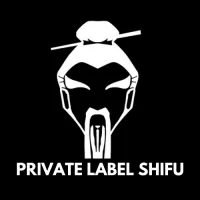PRIVATE LABEL SHIFU BLOGS
Ready to dive into more exciting content? Explore our latest blogs now!
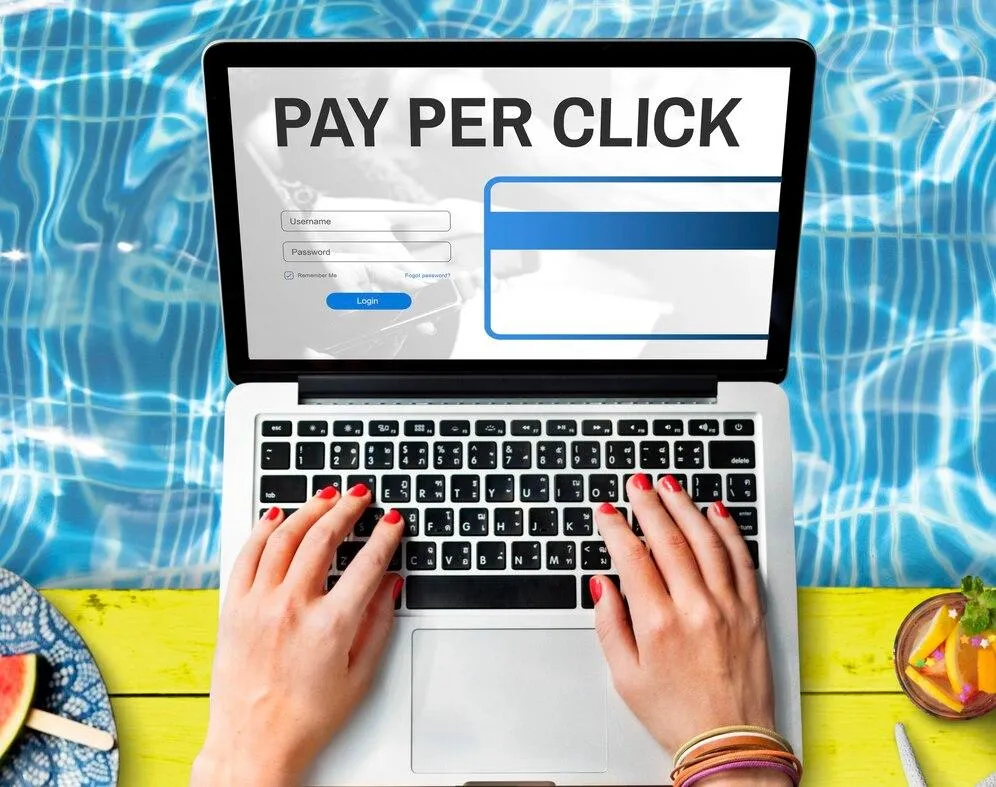
Maximizing Profits with Amazon PPC Advertising
“The only thing standing between you and outrageous success is continuous progress you need discipline." — Dan Waldschmidt
Amazon, with over hundreds of millions of active shoppers, offers an unparalleled opportunity to reach a massive audience for product sales. 79% of brands rely on PPC advertising, making it a powerful and cost-effective method to increase product visibility and drive sales on the platform.
If you're already selling on Amazon, you've likely encountered the term "Amazon PPC advertising." However, if you're new to the platform, you might be asking, "What exactly is Amazon PPC, and how does it work?"
Don’t worry!
In this comprehensive guide, we'll start by covering the basics of Amazon PPC, helping you understand its importance and functionality. We'll then guide you step-by-step on how to set up your first PPC campaign, ensuring that you optimize your advertising budget without overspending.
Let’s get started and set you on the path to successful Amazon advertising.
What is Amazon PPC?
Amazon PPC (Pay-Per-Click) is a powerful advertising model designed to help sellers and brands increase their product sales on Amazon's platform. By creating ad campaigns, sellers can showcase their products to a broader audience. The way it works is simple: whenever a potential customer clicks on one of these ads, the seller is charged a small fee by Amazon. This model ensures that you're only paying for actual interest in your products, making it a cost-effective strategy to boost visibility and drive sales.

How Does Amazon PPC Work?
To make the most of Amazon PPC, it's crucial to grasp how the system functions and familiarize yourself with its key terms and features. Here's a high-level overview of the process:
Shopper's Search: A customer searches for a product on Amazon, for example, “water bottle.”
Ad Collection: Amazon gathers all relevant ads associated with the keyword “water bottle.”
Bidding Process: Sellers who have created PPC campaigns for this keyword enter an auction. The sellers bid for their ads to appear in prominent positions on the search results page.
Auction Results: The highest bidder wins the auction, and their Sponsored Product ad is displayed at the top of the search results or on the product detail pages.
Cost Per Click: When a shopper clicks on the ad, the seller is charged a small fee by Amazon, which is the essence of the pay-per-click model.
This process enables sellers to strategically position their products where potential buyers are most likely to see them, increasing the chances of making a sale. By understanding and effectively using Amazon PPC, sellers can significantly enhance their product visibility and sales performance on the platform.
The Importance of PPC for Amazon Sellers
Now that you have a basic understanding of Amazon PPC, let’s explore why it’s crucial for the success of your Amazon business.
As of May 2022, Amazon boasted an impressive 2.4 billion organic visits. With the ongoing shift toward online shopping, platforms like Amazon present an enormous opportunity for sellers to increase their revenue. However, with this growth comes a significant challenge—visibility.
Amazon is a retail platform where users are highly motivated to make purchases. But here's the catch: if your product doesn’t appear on the first page of search results, it risks being overlooked. In fact, 45% of buyers report that they won’t bother scrolling past the first page. This is where the power of Amazon PPC ads comes into play.

Why is PPC Crucial for Amazon Sellers?
Amazon PPC ads are a powerful tool to help your products rise to the top of the search results. Without PPC, your listings could easily get lost in the vast sea of competitors, especially if you’re selling in a highly competitive category. By investing in PPC, you can ensure that your products are prominently displayed, capturing the attention of potential buyers who are ready to make a purchase.
This not only drives more immediate sales but also contributes to improving the organic ranking of your products over time. As your product performs well in sponsored placements, its relevance and popularity increase, leading to higher organic rankings for the targeted keywords. This creates a positive feedback loop: more visibility leads to more sales, which in turn further boosts your product’s position in search results.
In a marketplace as competitive as Amazon, PPC is not just an option—it’s a necessity. By leveraging PPC effectively, you can significantly enhance your product’s visibility, drive consistent sales, and ultimately, grow your Amazon business.
Amazon PPC: Key Terms and Features Explained
Understanding the key metrics and features of Amazon PPC (Pay-Per-Click) is essential for effectively managing and optimizing your ad campaigns. Here’s a breakdown of the most important terms you need to know:
1. Advertising Cost of Sales (ACoS)
ACoS is a critical metric that measures the efficiency of your Amazon PPC campaign. It is calculated as the ratio of your ad spend to the revenue generated from that ad. For instance, if you spend $5 on advertising and earn $20 in attributed sales, your ACoS would be calculated as follows:

A lower ACoS indicates a more efficient campaign, meaning you're spending less to generate more sales.
2. Impressions
Impressions refer to the number of times your PPC ad is displayed to shoppers. Even if a shopper doesn’t click on your ad, each time it appears on their screen counts as an impression. Tracking impressions is important because it gives you an idea of how often your ad is being seen, which can help gauge its visibility.
3. Clicks
Clicks are simply the number of times shoppers have clicked on your ad. This metric is crucial because it shows how many people are interested enough in your product to learn more. However, clicks alone don’t guarantee sales, so it’s important to monitor them alongside other metrics.
4. Click-Through Rate (CTR)
CTR is the ratio of clicks to impressions, expressed as a percentage. It indicates how effectively your ad is capturing the attention of shoppers. For example, if your ad receives 100 impressions and only one click, your CTR would be:

A higher CTR typically means your ad is resonating well with your target audience.
5. Cost Per Click (CPC)
CPC is the amount you pay to Amazon each time a shopper clicks on your ad. The cost can vary widely, ranging from as little as $0.05 to as much as $10 per click, depending on factors like competition for the keyword and the quality of your ad. Managing your CPC is key to controlling your advertising budget and ensuring that your campaigns remain profitable.
6. Attributed Sales
Attributed sales represent the total revenue generated from clicks on your ad within a specific period. It’s important to note that there can be a delay of up to 48 hours for this data to appear in your reports. Tracking attributed sales helps you understand the direct impact of your ad campaigns on your overall sales performance.
Why Are These Metrics Important?
By closely monitoring these key metrics, you can gain valuable insights into the performance of your PPC campaigns. For instance, a high number of impressions with a low CTR might indicate that while your ad is visible, it’s not compelling enough to drive clicks. Similarly, a high CPC with a high ACoS could signal that you’re spending too much on ads relative to the revenue they’re generating, which could hurt your profitability.
Amazon PPC Ad Types
When setting up your first PPC campaign on Amazon, you’ll encounter three main ad types:

Sponsored Products
Sponsored Brands
Sponsored Display
Each of these ad types serves a unique purpose based on your specific advertising goals.
Sponsored Product Ads
Sponsored Product Ads are the most widely used among Amazon sellers. These ads are prominently displayed across various locations, such as the top of the organic search results, within the search results themselves, and on individual product listing pages.
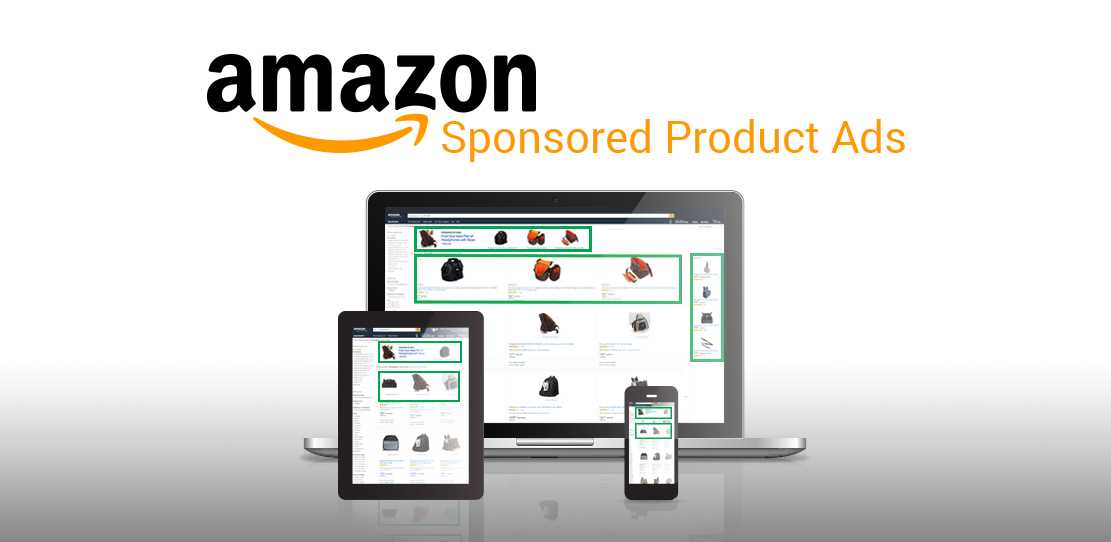
In Search Results: Sponsored Product Ads appear alongside organic search results, making them highly visible to shoppers.
On Product Pages: These ads are also shown on product listing pages, helping capture the attention of customers who are already browsing similar products.
You can easily identify Sponsored Product Ads by the small “Sponsored” label that accompanies them. This ad type is particularly popular, with about 70% of third-party sellers on Amazon utilizing it.
Advantages of Sponsored Product Ads
Sponsored Product Ads offer several key benefits:
Seamless Integration: These ads blend smoothly with organic search results, ensuring they don’t disrupt the shopping experience.
Increased Visibility: With effective keyword research, Sponsored Product Ads can quickly boost the visibility of newly launched products, driving sales and improving the Best Sellers Rank (BSR).
When creating a Sponsored Product Ad, you can choose between two targeting options:
Automatic Targeting
Manual Targeting
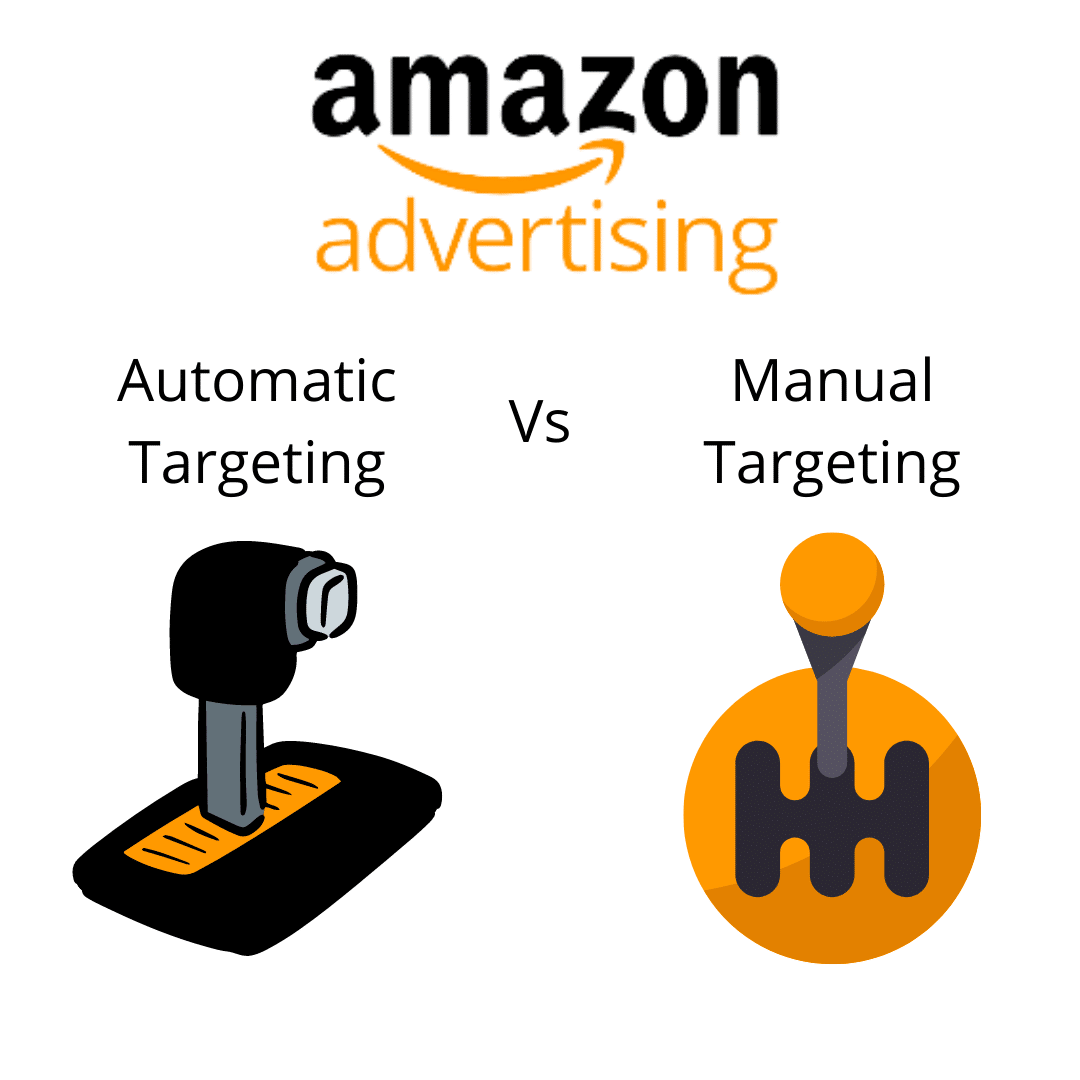
Let’s dive into each one:
Automatic Targeting
Automatic targeting leverages Amazon’s algorithms to determine which keywords to target based on the content of your product listing. Amazon continuously collects data on shopper behavior, adjusting bids to optimize targeting and maximize conversions over time.
This option is ideal for new sellers who haven’t yet identified specific keywords to target. However, it comes with certain limitations. Since Amazon’s algorithm controls the keyword selection, you have less direct control over your campaign, and you may end up spending more initially to gather relevant data.
Amazon offers different targeting groups within automatic campaigns:
Close Match: Your ad appears when a shopper searches for terms closely related to your product. For example, if you sell running shoes, your ad might show up when someone searches for "sprinting shoes."
Loose Match: Your ad is displayed for broader, loosely related search terms. For instance, a running shoe ad could appear in a search for "athletic gear."
Substitutes: Your ad might be shown when a shopper searches for a similar product from another brand, such as "Nike shoes" when you sell running shoes.
Complements: Your ad appears on the product pages of complementary items. For example, an ad for running shoes could appear on a socks product page.
Manual Targeting
Manual targeting gives you more control over your ad campaigns. You can select specific keywords based on data from automatic campaigns. Additionally, you have the flexibility to set custom bids for each keyword.
Manual targeting can be further divided into two approaches:
Keyword Targeting: Target specific keywords that shoppers are likely to use when searching for your product.
Product Targeting: Focus on specific products or categories related to your own to ensure your ads are displayed to the right audience.
Each of these targeting strategies allows for a more tailored approach to your Amazon PPC campaigns, helping you achieve your advertising goals more effectively.
Sponsored Brand Ads
Sponsored Brand ads, previously known as "headline search ads," are advanced advertising options on Amazon that are exclusively available to brand-registered sellers and vendors. These ads are designed to enhance brand visibility and boost sales by featuring your products in visually appealing formats on relevant Amazon search result pages.

Where Sponsored Brand Ads Appear
These ads typically appear in prominent locations such as the top, side, and bottom of Amazon search results. Sponsored Brand ads showcase your brand’s logo, tagline, and a selection of products, making them highly effective for building brand awareness.
Benefits of Sponsored Brand Ads
Sponsored Brand ads offer several advantages:
Improved Return on Ad Spend (ROAS): These ads can direct shoppers straight to your brand's storefront or a custom landing page, where there’s no competition from other sellers, leading to higher conversion rates.
Cross-Promotion of Products: Sponsored Brand ads allow you to promote complementary products, encouraging customers to add more items to their carts, which can increase your average order value.
Sponsored Brand Ad Formats
Amazon offers three distinct formats for Sponsored Brand ads, allowing sellers to choose the one that best fits their marketing goals:
Product Collection
Store Spotlight
Video Ads
Product Collection

The product collection format lets you promote up to three products simultaneously. You can drive traffic from the ad directly to your branded Amazon storefront or a specific landing page that highlights the three products featured in the ad. This format is ideal if you want to increase visibility and drive conversions for specific products.
Store Spotlight

The Store Spotlight format is perfect for brands that offer a variety of products across multiple categories. Instead of focusing on individual products, this ad format promotes up to three product categories or subcategories. When shoppers click on a category within the ad, they’re directed to the relevant subcategory page on your Amazon storefront. This approach is particularly useful for brands looking to highlight their diverse product range.
Sponsored Brand Video Ads
Sponsored Brand ads can also include video content, which stands out more prominently than static images. Video ads can significantly boost your brand’s visibility, making them a powerful tool for outshining competitors.

Before creating a video ad, it’s essential to review Amazon’s guidelines for Sponsored Brand video ads. Here are some best practices to keep in mind:
Optimal Length: Videos should be between 15 and 30 seconds long.
Focus on Substance: Ensure your video is informative, without unnecessary filler content.
Visual Clarity: Since videos autoplay without sound, include informative text and captions to convey your message effectively.
Immediate Engagement: Avoid lengthy introductions; showcase your product right at the start to grab attention.
By following these guidelines, you can create compelling Sponsored Brand video ads that enhance your brand’s presence on Amazon and drive meaningful results.
Sponsored Display Ads
Sponsored Display Ads offer sellers a powerful way to engage shoppers at various stages of their buying journey, ultimately boosting conversions. These ads can be displayed in a wide range of locations, including Amazon affiliate sites, mobile apps, Netflix, Facebook, and even Google, making them highly versatile.

Recently, Amazon has introduced video creatives for Sponsored Display Ads, allowing sellers to capture shoppers’ attention with engaging visuals both on and off Amazon.
Benefits of Sponsored Display Ads
Sponsored Display Ads are particularly effective for re-engaging potential customers and encouraging them to complete their purchases. They leverage shopping signals to target high-intent audiences, whether they are browsing on Amazon or other platforms, and draw new customers into your funnel.
Key benefits include:
Re-engagement: These ads are excellent for retargeting potential customers who have shown interest in your product but haven’t yet made a purchase. By reminding them of your product in various places, you increase the likelihood of conversion.
Off-Amazon Targeting: Sponsored Display Ads can reach shoppers outside of Amazon and bring them back to your product listing, expanding your reach beyond the platform.
Enhanced Sales for High-Priced Items: These ads are particularly effective for products with longer sales cycles, helping to nurture leads and convert them over time.
Sponsored Display Ads Targeting Options

Unlike other Amazon ads, Sponsored Display Ads don’t target specific keywords. Instead, they focus on targeting individual shoppers based on their behavior, ensuring your ads reach those most likely to convert.
For example, if a shopper has previously viewed a product on Amazon, Sponsored Display Ads will repeatedly show that product to the same shopper across various platforms, encouraging them to return to your listing and complete the purchase.
Sponsored Display Ads offer two main targeting options:
Contextual Targeting
Amazon Audiences
Contextual Targeting
Contextual targeting allows sellers to display ads to shoppers who have visited a particular product or product category. These ads can appear not only on Amazon’s search result and product detail pages but also on external platforms like Facebook, Twitch, and third-party websites.
Audience Targeting
Audience targeting gives sellers the ability to choose specific shopper segments to display Sponsored Display Ads to. There are three primary audience-targeting strategies:
Views Remarketing: This strategy retargets audiences who have viewed your product’s listing or similar products but haven’t made a purchase within a specific time frame, known as the lookback window. Options range from 7 to 90 days. Views remarketing is ideal for raising awareness during new product launches, guiding shoppers through the consideration phase, and converting missed sales opportunities.
Purchases Remarketing: This strategy targets audiences based on their purchase behavior within a designated time frame. It allows sellers to re-engage previous buyers, boost brand loyalty, and reach customers who have purchased similar products. The lookback window for purchases remarketing is longer, ranging from 7 days to 365 days.
Amazon Audiences: Amazon Audiences enables sellers to reach new prospective buyers by targeting predefined audience segments. There are four audience strategies to choose from:
In-market: Targets shoppers who are actively searching for products in a specific category.
Lifestyle: Targets audiences based on a range of shopping and viewing behaviors, including shopping on Amazon, video streaming, and browsing on IMDb.
Interests: Allows sellers to raise awareness about their products to potential buyers based on their frequent browsing and purchase history.
Amazon DSP
Amazon DSP (Demand-Side Platform) is a powerful advertising tool provided by Amazon that allows advertisers to programmatically bid on and purchase ad space across various websites and apps through a single, unified platform.
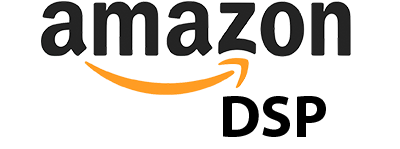
With Amazon DSP, you can create a seamless shopping experience for your customers by delivering targeted ads to them across a broad range of digital touchpoints, not just on Amazon but also on external sites and apps. This platform enables you to efficiently manage and optimize your ad campaigns, reaching your desired audience at the right time and place.
Amazon OTT
Amazon OTT (Over-The-Top) ads are video ads that allow you to connect with shoppers through Amazon’s own platforms, including its websites, mobile apps, and the Fire tablet wake screen. These ads provide an opportunity for brands to tell their stories in a compelling and visually engaging way.

By using Amazon OTT, you can deliver your message directly to consumers, offering a rich and immersive experience that enhances brand awareness and engagement. These ads are particularly effective for reaching customers where they spend much of their time—on streaming platforms and mobile devices.
Final Thoughts
We hope this Amazon PPC guide has given you a clear understanding of the different types of Amazon advertising and how to create an effective PPC campaign.
This guide is packed with actionable insights, so be sure to bookmark it and revisit it whenever you’re setting up or refining your PPC campaigns.
Need Help Navigating Amazon PPC?
Book a Call with us today!
Are you looking to maximize the effectiveness of your Amazon PPC campaigns and elevate your business to new heights?
AMZ Shifu is here to support you every step of the way. Our team of seasoned experts can help you design, launch, and optimize your PPC campaigns, ensuring that your products achieve the highest visibility and profitability on Amazon.
Ready to take your Amazon sales to the next level?
Schedule a call with AMZ Shifu today, and let us help you unlock the full potential of Amazon PPC!
GET THE LATEST NEWS
AND MEET AND SEE REAL CONVERSATIONS FROM OUR SUCCESSFUL MENTEES
⭐⭐⭐⭐⭐
Books Recommendation for Amazon Private Label
IF YOU ARE SERIOUS ABOUT TURNING YOUR LIFE INTO A NEW CHAPTER CLICK THE BUTTON BELOW TO APPLY FOR OUR DISCOVERY CALL
NO COMMITMENT REQUIRED IF YOU ARE NOT A GOOD FIT
DISCLAIMER: The sales figures stated anywhere on this funnel are individual sales figures and marketing results. Please understand that sales figures are not typical, and we are not implying that you will duplicate them. We have the benefit of doing online marketing for 4+ years, and have an established following as a result. The average person who simply purchases any “how-to” program may not follow through on what they are being taught and because of that we cannot guarantee any specific result. We are using these references for example purposes only. Sales figures will vary and depend on many factors including but not limited to background, experience, and work ethic. All business entails risk as well as massive and consistent effort and action. If you’re not willing to accept that, this is not for you.
>ABOUT THE STRATEGY SESSION: After completing an application, you will get the opportunity to schedule in a Strategy Session with a qualified person from our team. This is completely optional. The Session lasts about 45 minutes and if you do not want to work more closely with us, you can leave without buying anything. The Strategy Session to provide insights insights on the operations of your business and offer strategies for growth that you will be able to implement right away.
NOT FACEBOOK™: This site is not a part of the Facebook™ website or Facebook Inc. Additionally, This site is NOT endorsed by Facebook™ in any way. FACEBOOK™ is a trademark of FACEBOOK™, Inc. Hi! We use cookies, including third-party cookies, on this website to help operate our site and for analytics and advertising purposes. For more on how we use cookies and your cookie choices, go
here for our cookie policy!
@2024 AMZSHIFU.COM All Rights Reserved

